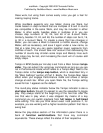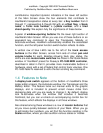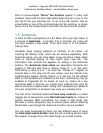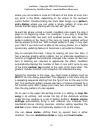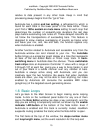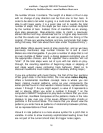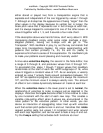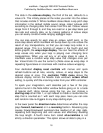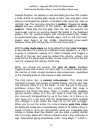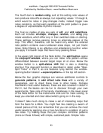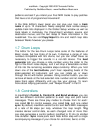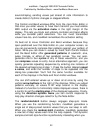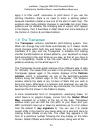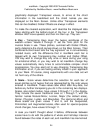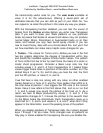maxWerk - Copyright 2000-2007 Amanda Pehlke
Published by RedMoon Music - www.RedMoon-Music.com
18
The data in the
octaves
display
, the third of the set,
defaults
to a
value of 4. This initially places all the notes you
enter
into the octave
that includes middle C. While maxWerk stores Basic Loop pitch step
information
in the
default
middle sound
range,
notes'
octaves shift
according
to
changing
data that comes
from
this set. Octave values
range
from
0
through
8, and they are
read
on a
per-step
basis just
like note and velocity data, so by making
patterns
of octave steps
you can easily
construct
wide-ranging
arpeggio
loops.
You can also specify for each step an octave cutoff point, or the
scale step above which maxWerk will
bump
down by one octave the
result of any
transpositions,
so that you can keep loop notes in a
desired
range.
This is a
function
of values in the
fourth
and last
Editor
graphic,
the wrap
steps
display
. You can
hear
the effects of
wrap values only when your loop is playing over
changing
tonic
transpositions.
When you set any or all wrap steps to value 0,
maxWerk uses a
random
wrap step value that
changes
once per
bar. Value 8 tells it to use the
current
(+)Note
value as wrap step. A
repeating
figure
takes on craziness with
creative
octave
wrapping.
Four
dedicated
display
reset
controls
with
menus
and quick
refresh
buttons
set all note, velocity, octave, or wrap steps to the
desired
value at once. The
controller
THRU menu above the
octaves display
mirrors
the Noodle track window's
octave
offset
setting, to quickly shift the
incoming
notes
from
your MIDI
controller.
To spark your
imagination,
we'll
describe
just a few of the play
options
found
in the Note Editor window
before
going on to a taste
of
heavier
stuff. Using
menus
along the top, you can choose a
starting
step
other
than 1, or opt instead to
rotate
or
randomize
the
step that is
counted
as 1 with each loop pass. Here you can also
add
random
note-re-triggers
to any
step-starting
style.
In the lower panel the
direction
menu
determines
whether
the loop
plays forward,
backward
, or in a reversing
fashion.
Reversing
play
causes
forward-backward
pendulum-like
readout
of all step data,
repeating
both
beginning
and end values and effectively
doubling
the loop
length.
A
fourth
menu
item called
alt-scrambles
is not
strictly a
direction
parameter.
This option allows all data to play in a




